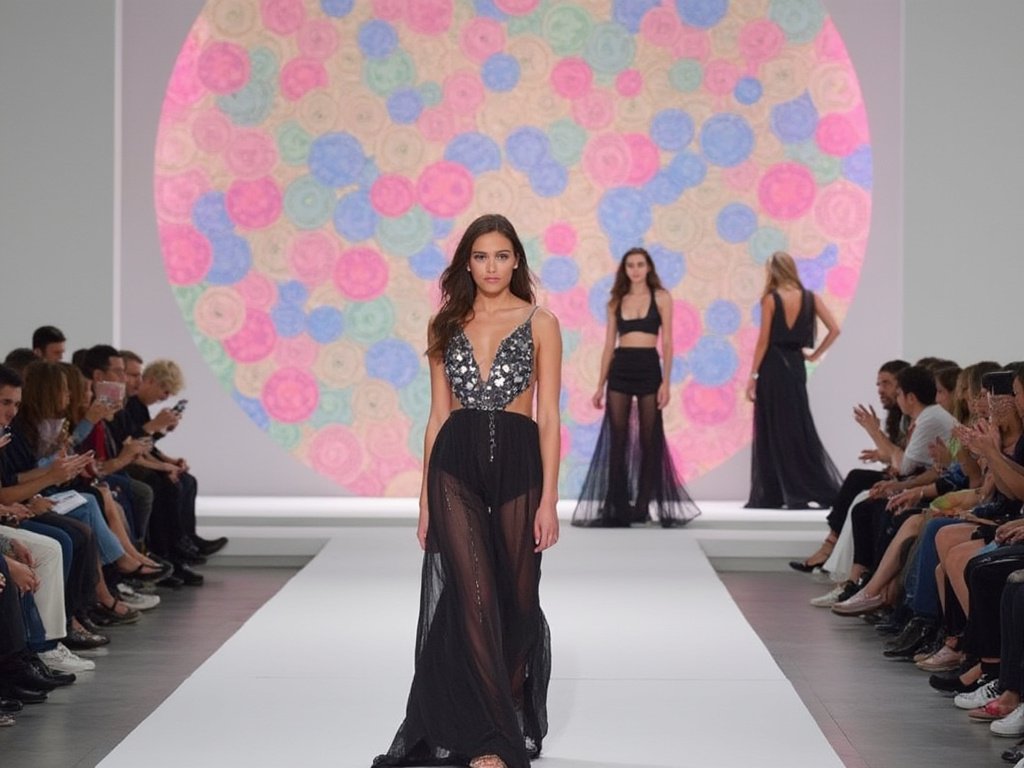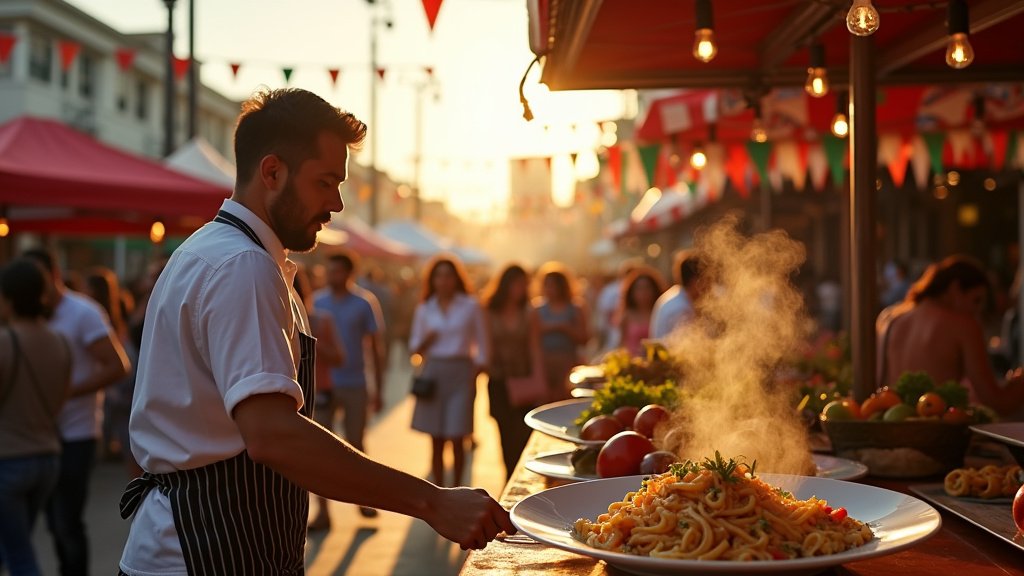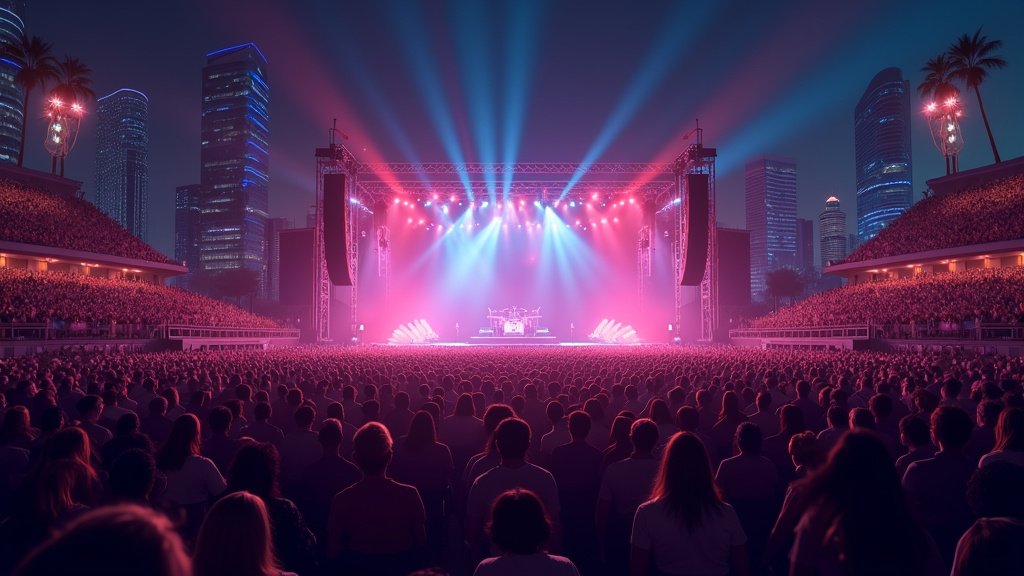Los Angeles Fashion Week (LAFW) has evolved into one of the most anticipated events on the global fashion calendar. It serves as a showcase for West Coast creativity and the perfect convergence of Hollywood glamour, streetwear culture, and the avant-garde. Over the years, LAFW has matured into an important platform for emerging designers, celebrity attendees, and industry insiders who are eager to witness new trends and support fresh talent. As LA’s influence in the world of fashion continues to grow, the significance of its fashion week is undeniable, positioning the city as a true style capital.
From haute couture to sustainable fashion, LAFW captures the essence of the city’s eclectic and bold fashion identity. In this article, we’ll delve deep into the history, evolution, and key elements that make Los Angeles Fashion Week an unmissable event for fashion enthusiasts and professionals alike.
The Origins and Evolution of Los Angeles Fashion Week
Though LAFW does not have the centuries-old legacy of Paris or Milan, it has carved out a distinct identity since its inception in the early 2000s. Initially conceived as a platform to shine a spotlight on local talent, LAFW quickly gained traction as more designers, stylists, and influencers flocked to the City of Angels, drawn by its unique blend of fashion-forward street style and red carpet sophistication.
Unlike the rigid formality of New York Fashion Week or the old-world elegance of European fashion capitals, LAFW has always embraced an eclectic and rebellious spirit. In its early years, the event was more underground and experimental, with smaller, indie labels dominating the scene. Runway shows were often held in unconventional venues like industrial warehouses, art galleries, and even rooftops, giving the event a raw, edgy feel that resonated with the creative ethos of LA.
By the late 2000s, the event had gained momentum, with bigger designers and international brands starting to take notice. The unique aesthetic of LA’s fashion scene—drawing inspiration from its sunny beaches, diverse cultures, and laid-back vibe—began to influence the broader fashion world. Hollywood’s proximity also meant that celebrities became a regular presence at LAFW, further boosting its visibility and allure.
The Role of Hollywood: Where Fashion Meets Celebrity
No discussion of LAFW would be complete without acknowledging the pivotal role Hollywood plays in shaping its character. In Los Angeles, fashion and entertainment are inextricably linked. Celebrities are not just attendees; they are tastemakers and trendsetters who often become the first to showcase designer creations, turning red carpet moments into global fashion statements.
It’s not uncommon for runway shows to feel more like high-energy events, complete with performances from A-list musicians and appearances by well-known actors and influencers. The fusion of fashion with pop culture is a defining feature of LAFW, where celebrity sightings and star-studded after-parties create a sense of exclusivity and excitement.
While many designers around the world court celebrities to raise their brand profile, LAFW is uniquely positioned to connect fashion with Hollywood in real time. Emerging designers in Los Angeles have a direct pipeline to some of the biggest stars, meaning that the clothes on the runway can quickly find their way into celebrity wardrobes and onto global platforms.
Streetwear and Sustainability: Defining the LA Fashion Aesthetic
Los Angeles is a city of contrasts, and nowhere is this more evident than in its fashion. The aesthetic here is as diverse as the city itself, ranging from laid-back surf and skate culture to the cutting-edge, high-fashion looks spotted in neighborhoods like Silver Lake and Downtown LA. This mix of streetwear and high fashion is one of the key elements that sets LAFW apart from its international counterparts.
Streetwear’s Dominance
Streetwear has always had a home in LA. The city is often credited as the birthplace of modern streetwear, with brands like Stüssy, The Hundreds, and Fear of God all calling LA home. The influence of skateboarding, hip-hop, and surf culture is evident on the LAFW runways, where hoodies, sneakers, and oversized silhouettes regularly share the spotlight with more traditionally “high fashion” garments.
This year’s LAFW saw streetwear continue to dominate, but with a new twist: luxury streetwear. Designers are increasingly blending high-end fabrics with urban styles, creating collections that are as at home on the streets as they are in couture boutiques. The city’s casual-chic vibe is a magnet for designers who want to push the boundaries of fashion, blurring the lines between casual and formal wear in a way that only LA can pull off.
Sustainable Fashion Takes Center Stage
LAFW is also emerging as a leader in the sustainable fashion movement. As global consciousness around environmental issues continues to grow, so too does the demand for ethically produced, eco-friendly fashion. Many LA-based designers have adopted a “slow fashion” ethos, focusing on sustainability and ethical production methods.
At this year’s LAFW, several collections featured recycled fabrics, zero-waste designs, and cruelty-free materials. The city’s deep-rooted environmental awareness is becoming a hallmark of its fashion identity, with many designers leading by example in how the fashion industry can innovate without compromising the planet’s future.
Designers such as Reformation and Stella McCartney have been leading the charge in sustainable fashion in LA, promoting eco-friendly practices that align with the city’s laid-back yet conscious lifestyle. This focus on sustainability is reshaping the industry, influencing other fashion weeks to adopt similar principles and practices.
Diversity and Inclusion: A Reflection of LA’s Cultural Mosaic
LA is one of the most culturally diverse cities in the world, and this diversity is increasingly being reflected on its runways. LAFW has become known for its inclusivity, with designers showcasing collections that embrace all body types, ethnicities, and gender identities. From the models who walk the runway to the designers themselves, LAFW is a celebration of diversity and an open stage for underrepresented voices in fashion.
Recent LAFW events have seen a rise in designers from marginalized communities, bringing new perspectives to the fashion world. Collections inspired by African, Asian, and Latin American traditions have added richness and texture to the event, showcasing how fashion can be a global conversation. This level of representation is a refreshing departure from the often homogeneous nature of other fashion weeks around the world.
Gender Fluidity and Non-Conformity
Another trend that has gained momentum at LAFW is the move towards gender fluidity in fashion. Los Angeles, with its progressive social landscape, has become a hub for designers who reject traditional gender norms. Runway shows frequently feature gender-neutral collections, with models of all gender identities taking part. This blurring of the lines between men’s and women’s fashion reflects a broader cultural shift towards inclusivity and non-conformity, something that feels particularly at home in LA’s fashion scene.
Key Designers and Brands to Watch
While LAFW features many established names, it’s also an incredible launchpad for emerging talent. Each season, new designers use this platform to showcase their innovative designs, hoping to capture the attention of buyers, influencers, and the fashion press. Here are a few designers who have been making waves in recent years:
- Jonathan Simkhai: A local favorite, Simkhai’s collections are known for their modern, architectural designs that blend sophistication with sensuality. His work often blurs the line between structured tailoring and relaxed silhouettes, embodying the duality of LA’s laid-back yet polished aesthetic.
- Baja East: Known for their luxury streetwear, Baja East has become synonymous with LA fashion. Their collections often feature bold prints and oversized, comfortable fits that feel right at home in the city’s urban landscape.
- Emily Bode: Though based in New York, Bode’s frequent appearances at LAFW highlight her growing influence on the West Coast. Her use of vintage fabrics and sustainable practices aligns perfectly with LA’s eco-conscious fashion scene.
- Elihav Sasson: A favorite among celebrities, Sasson’s haute couture designs bring an element of red-carpet glamour to LAFW. His intricate beading, bold cuts, and dramatic silhouettes are often seen on A-listers attending the event.
The Business of Fashion: How LAFW is Shaping the Industry
While LAFW may be known for its creativity and trendsetting designs, it is also becoming a serious player in the business of fashion. The global fashion industry is estimated to be worth over $2.5 trillion, and LA is increasingly playing a larger role in this lucrative market. Designers showing at LAFW are no longer just looking for critical acclaim—they are also looking to secure retail partnerships, attract investors, and build their brand on a global scale.
LA’s fashion industry benefits from the city’s position as a major media hub, allowing designers to tap into both traditional and digital marketing channels. The influence of social media cannot be understated in this regard. Many LAFW shows are live-streamed, and the immediacy of platforms like Instagram allows designers to connect directly with a global audience in real time. In this way, LAFW is not just about the runway—it’s about building a fashion ecosystem that spans the globe.
The Future of LAFW: More Than Just a Fashion Week
Looking forward, Los Angeles Fashion Week is poised to continue its meteoric rise. With the growing focus on sustainability, inclusivity, and digital innovation, LAFW is set to become more than just a showcase for designers—it is positioning itself as a cultural movement. The event is increasingly seen as a space where fashion intersects with art, technology, and activism, making it relevant not only to fashion insiders but to a wider audience looking for inspiration and change.
In the years to come, we can expect LAFW to continue to push boundaries, foster new talent, and challenge the traditional norms of the fashion industry. In true Los Angeles style, the event will undoubtedly remain bold, innovative, and unapologetically diverse.





